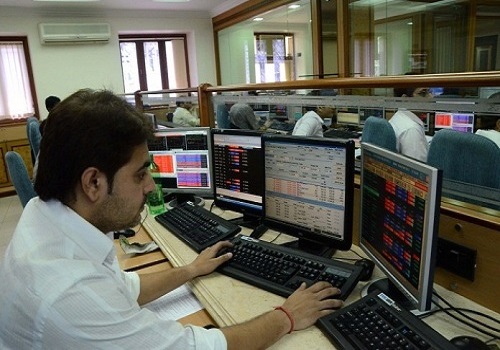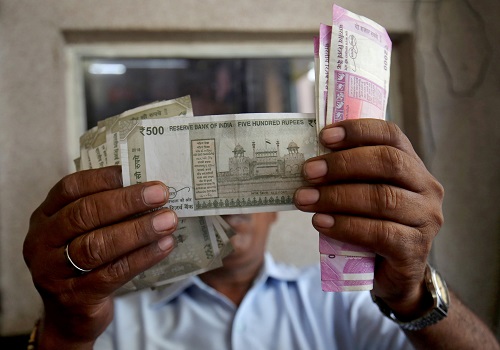India Enters a New Growth Cycle as Festive Tailwinds Strengthen Market Outlook: Investment Managers on smallcase

According to investment managers on smallcase, India’s equity markets are stepping into the festive quarter on a strong note, supported by rate cuts, GST 2.0 reforms, and improving domestic liquidity. With the festive calendar, ample liquidity, and macro stability coming together, they believe this could turn out to be one of the most promising holiday quarters in recent years.
The experts note that renewed FII inflows, credit expansion, and healthy earnings momentum are likely to power the next leg of the market rally. They see microfinance, consumer discretionary, and public sector banks emerging as key beneficiaries of this trend.
Speaking at a webinar, investment managers on smallcase Mr. Robin Arya (Founder, GoalFi), Mr. Ashwini Shami (EVP, OmniScience Capital) and Mr. Dhiren Shah (Director & Co-founder, Kamayakya) shared their outlook for the months ahead. They expect the second half of FY26 to deliver broader market strength, led by financials, consumption, infrastructure, and power sectors, as policy reforms and festive sentiment fuel fresh opportunities.
Festive Tailwinds: Demand Revival Across Key Sectors
Dhiren Shah, Investment Manager on smallcase and Director & Co-founder, Kamayakya said, “As we enter the festive season of 2025, India's financial markets present a complex yet promising landscape shaped by significant policy reforms, global headwinds, and domestic resilience. The combination of GST 2.0 implementation, infrastructure-led growth momentum, and evolving global dynamics creates unique investment opportunities while demanding careful navigation of emerging challenges.”
The festive period from October to December traditionally drives 35-40% of annual consumption across discretionary categories. Early indicators suggest strong momentum, with e-commerce sales projected at Rs 1.2 lakh crore (up 27% YoY), UPI transactions crossing 20 billion in August 2025, and MSME festive credit demand expected to surge 35-40% to Rs 3.45 lakh crore.
The positive impact of GST reforms is already visible in early festive sales. Mahindra & Mahindra reported over 60% growth in SUV segment and 70% growth in commercial vehicles during the initial Navratri period, attributed partly to "GST 2.0 impetus". This suggests the tax rationalization is effectively translating into demand stimulus.
Robin Arya, Investment Manager on smallcase and Founder, GoalFi said, “India has a growing middle-class with rising disposable income and household consumption. We are at the cusp of a broad-based demand revival. GST cuts are improving affordability, while rate cuts are easing credit flow. Urban and Rural demand is converging backed by increasing electrification, aspirational spending and credit access penetration. Moreover, recent rate cuts will make EMIs fall, making high-ticket consumer goods more affordable. While, strong festive demand expected to continue in consumer discretionary products like jewelleries, accessories and value retail segments benefitted by GST rate cut consumption boom. On other hand MFIs will see a boost as monsoon-driven rural income and the festive season in H2 FY26 underpin a pickup in fresh disbursements, especially in two-wheeler and consumer durable loans.”
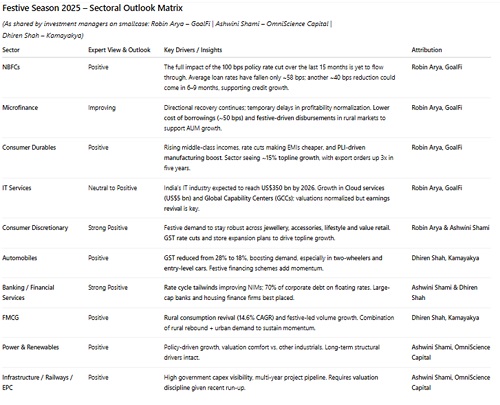

India is showing resilience despite global uncertainty
The managers highlight that despite global trade tensions and weakening US demand, India’s macro indicators remain resilient. September data showed GST collections at a 4-month high, steady PMI readings, and a pickup in vehicle registrations and personal loans, reflecting robust domestic demand. The Reserve Bank of India has subsequently upgraded its FY26 growth forecast to 6.8% from 6.5%, citing strong rural demand supported by good monsoon, robust agricultural activity, and gradually reviving urban demand.
The government's infrastructure-focused approach continues to underpin economic momentum, with capital expenditure allocation increased to Rs 11.21 lakh crore for FY26, representing 3.1% of GDP. This represents a substantial increase from the previous year and signals sustained commitment to infrastructure-led growth, particularly benefiting sectors like railways, roads, and urban development.
Ashwini Shami, Investment Manager on smallcase and EVP, OmniScience Capital said, “We expect this economic growth momentum to continue with support from the current festive season and the consumption boost due to tax cuts and a benign interest rate environment. Macro indicators such as Inflation and PMI data suggest the same that are witnessing decadal best numbers. Continued investments and industry incentives are expected to drive strong economic growth and if supported by FII inflows and stable currency, we could expect good market performance in the 2nd half.”
Review of H1 FY26: Mixed Performance Amid Global Headwinds
The first half of FY26 witnessed modest gains for benchmark indices, with Nifty 50 advancing 2.5% despite multiple global challenges. The period was characterized by intense FII selling, elevated US interest rates, and concerns over expensive valuations, yet domestic institutional investor support provided crucial stability.
Infrastructure and PSU Banks emerged as clear winners, delivering 18.5% and 22.3% returns respectively in H1FY26. This outperformance aligns with government capex focus and improving credit environment for public sector banks. Conversely, IT services faced headwinds from H1-B visa fee hikes and reduced technology spending, declining 15.5%. The metals sector struggled with China competition and global demand concerns, falling 8.9%.
Foreign institutional investors sold Rs 2.13 lakh crore worth of Indian equities in the first nine months of 2025, making it potentially the worst year on record for FII withdrawals. The selling was concentrated in October 2024 (Rs 94,000 crore) and January 2025 (Rs 78,000 crore), driven by expensive valuations, narrowing rate differentials with the US, and China's relative attractiveness following stimulus measures.
However, recent data suggests stabilization, with FII flows turning marginally positive in early October 2025, indicating potential exhaustion of selling pressure and emerging buying interest at lower levels.
Above views are of the author and not of the website kindly read disclaimer




.jpg)



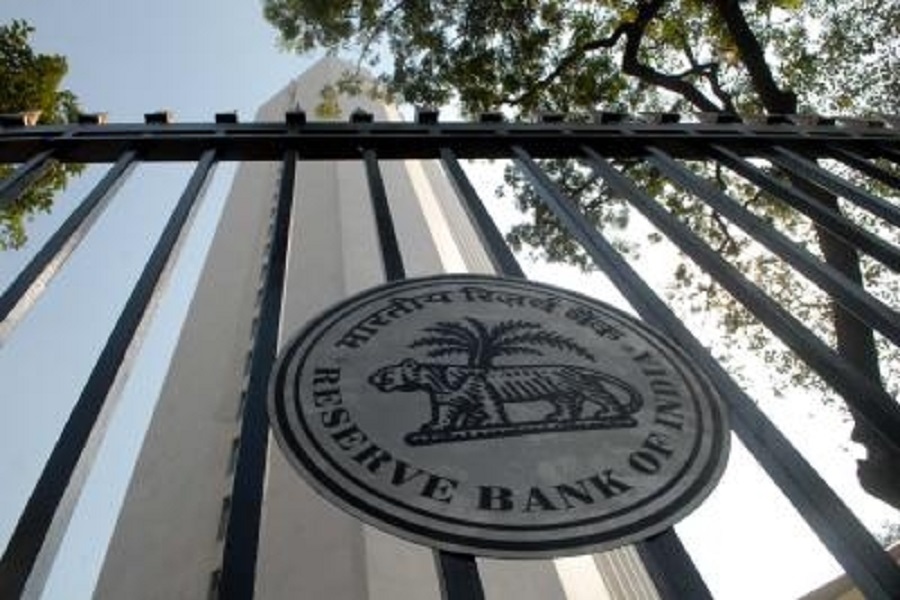

Tag News

New Year Outlook December 2026 from Motilal Oswal Financial Services

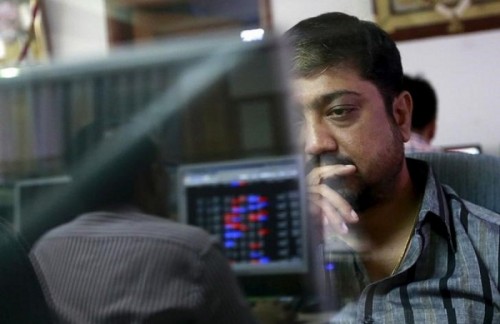

More News

India VIX decreased by 2.79% to close at 18.02 touching an intraday high of 19.04 - Nirmal B...
